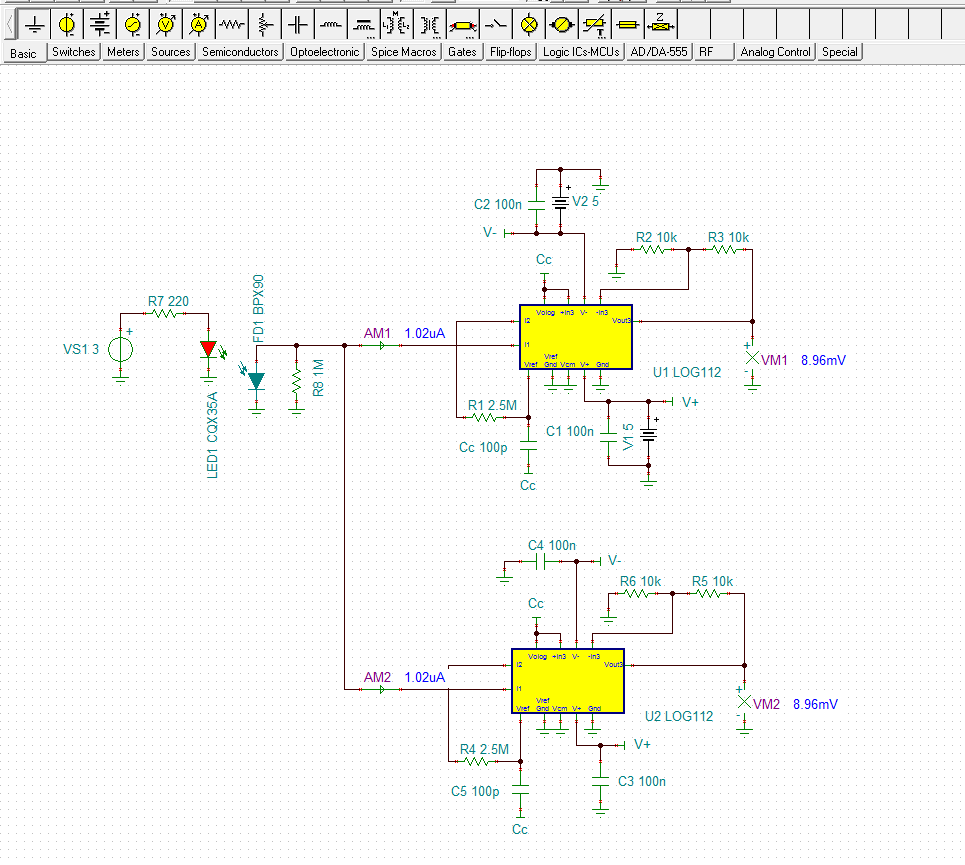Other Parts Discussed in Thread: LOG114
I have a customer asking if he can connect the output of a single photodiode to two different LOG112 amps. I told him that this would not be a good idea as the current would not divide evenly and the current from a photodiode is often so low that splitting it would make a reading impossible. Here is the response that he sent:
I perfectly realize that splitting the current will not be even but I am going to calibrate the log.amp output based on the known optical power applied to the photo-diode.
So the un-evenly splitting of the photo-current will be calibrated out for every of two log.amps.
I believe that the current can split differently depending on the level of the input current. Would this be correct?
I am concern about the stability of those log.amps with commonly connected input (about the stability of my calibration).
The TINA-based simulation shows no problems but I am not sure I take in account the important details / some parameters/. The TINA has the LOG114 – maybe you could send the model for the LOG112 or explain why the TINA simulator is not good for such task?
Would there be stability issues if he was to connect the photodiode in this way. I know that many of these amplifiers are very particular about capacitance on the input. Are there any issues that he should watch for if he connects the LOG112 in this manner?
Thanks for your help with this!
Richard Elmquist


